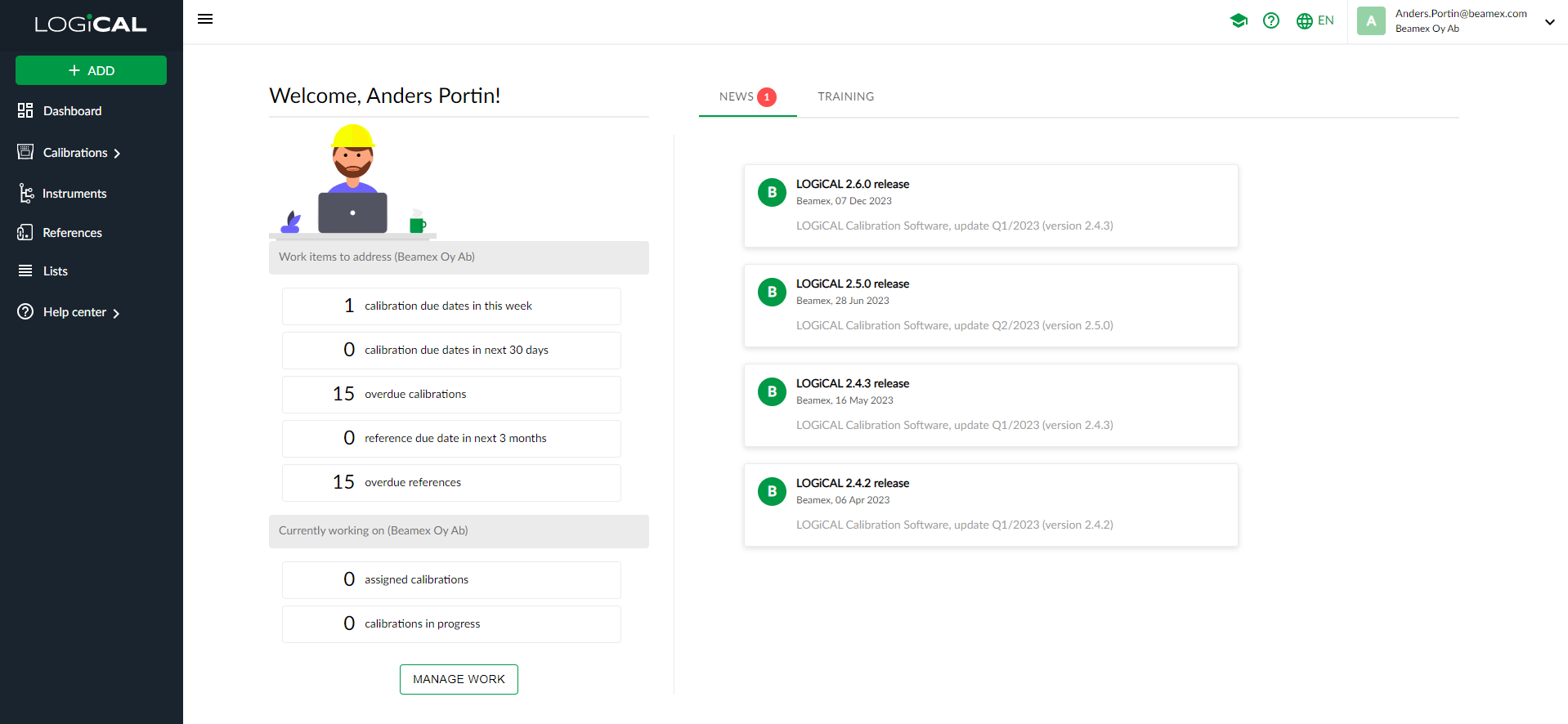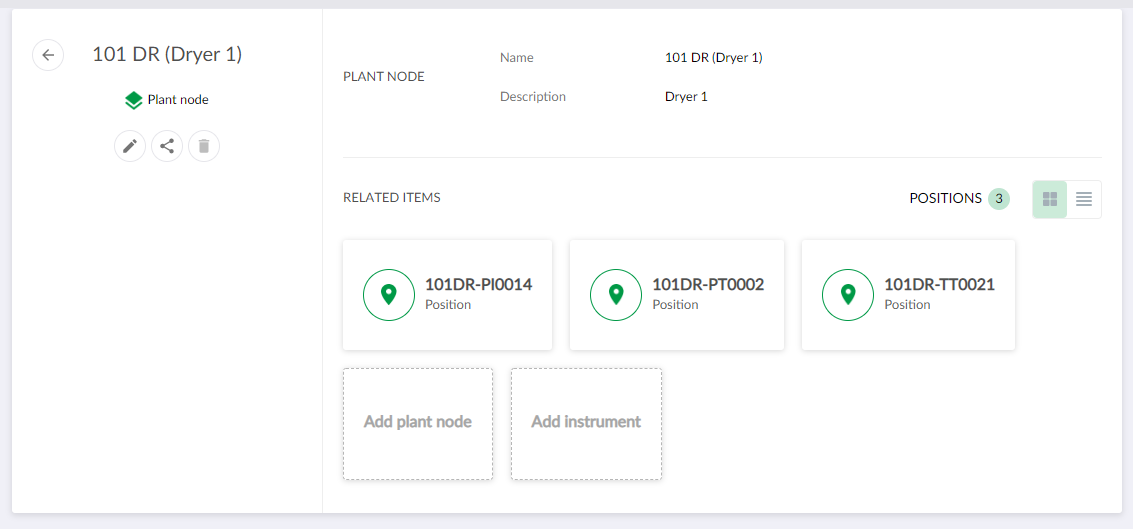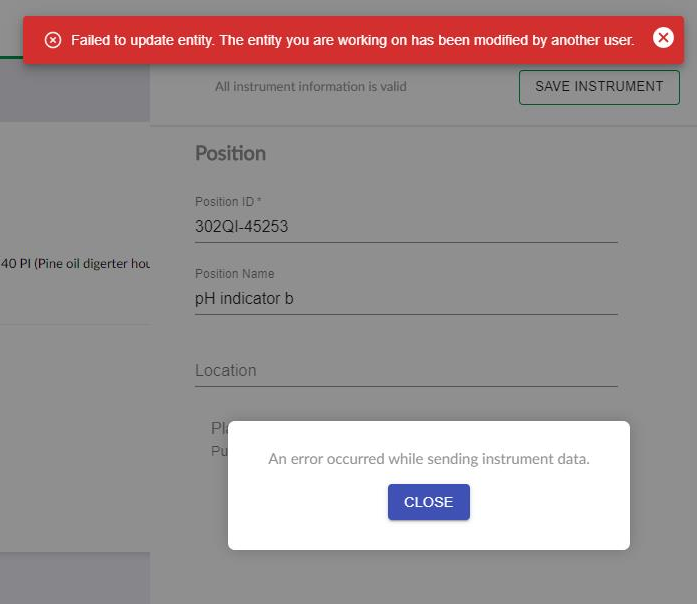LOGiCAL user interface
The first thing you see after signing into LOGiCAL is the dashboard

Note! The views may look different depending on the browser window size or if it is viewed on a mobile device.
The header row
The header row contains four components:
| Icon | Title | Description |
|---|---|---|
| Menu toggle | Toggle for enlarging / shrinking the navigation bar. | |
| Getting started | Opens this Getting started dialog | |
| Help | Opens this help document. | |
| Change language | LOGiCAL is translated into many different languages. The language setting is user specific and every user has the possibility to use LOGiCAL in their own preferred language. By selecting your preferred language. The user interface is automatically refreshed and translated to your selected language. | |
| Signed in user | Manage user information in myBeamex, change organization, regional settings, see subscription details and sign out. |
The navigation bar
The navigation bar on the left hand side of the screen contains the main menu with following items:
| Icon | Title | Description |
|---|---|---|
| Create | Quick link for creating a new instrument. See Add instruments for more details | |
| Dashboard | Dashboard | Opens the dashboard view. |
| Calibrations | Calibrations | Two separate views: One for managing your upcoming calibration tasks and one for completed work. For details, see Manage work and Completed work. |
| Instruments | Instruments | View for maintaining your organization's instrument database and provides access to calibration results. See Instruments for more details |
| References | References | View for maintaining your organization's reference database. For more details, see References |
| Lists | Lists | View for maintaining different lists used throughout LOGiCAL application. For details, see Lists |
| Help center | Help center | Here you find
|
You know which main navigation item you are working with from a green bar shown on the left side of the active selection, as seen in the topmost picture, next to the dashboard.
Common elements
Date picker
Wherever you need to select a date within LOGiCAL, it is done using the date picker.

- If you need to select a different year, that can be easily done by clicking the year in the top left corner of the date picker The view changes to show years, from which you can choose the right one.
- Months can be scrolled back and forward with the arrows highlighted in the picture.
- Date is selected by clicking on one.
Once you are done, click Ok
Filter
Several views have context specific filtering functionality. Where available, filtering functionality can be accessed through the Filter button, which is found from the top right corner of the selected view.
Active filter selections are shown next to the filter text in brackets e.g. (1) as shown in above picture.
Search
Several views have search functionality, which can always be found from the same location (top right corner):

You can type your search criteria and the list of units is shortened based on your search term. To remove the search criteria and show all values, click on the x next to the search bar.
Breadcrumb
The breadcrumb allows you to see where you are located within a structure. To navigate backward within the structure, you can click on any level of the breadcrumb, e.g. by clicking 101 DR (Dryer 1) in the example picture below would take you back to the last plant node and you would see all positions listed under that plant node.
Share
You can share a view with a colleague within your organization by clicking the share button found from the top left part of the view you are working with.
Card view and list view
You can toggle between two viewing types, card view and list view in all instrument related views.
In the card view, the items are listed as cards. You also have the possibility to create a new item under the structure you are in from this view.

List view provides an easy to read list of items.

Context help
LOGiCAL contains some context specific help dialogues. They are found in the instrument creation / editing views. By clicking on the question mark, the context help can be opened:
An opened context help example shown below:

Simultaneous editing
If two or more users are simultaneously editing the same record, then the one who saves his edits first "wins". This is called optimistic concurrency control. The changes made by other users are rejected and a message informing of the situation is shown for them.
